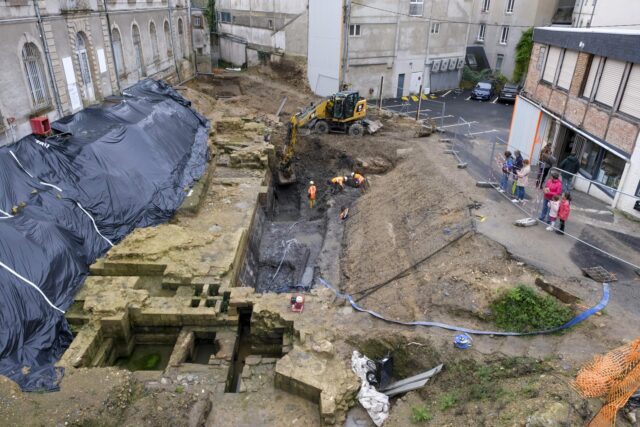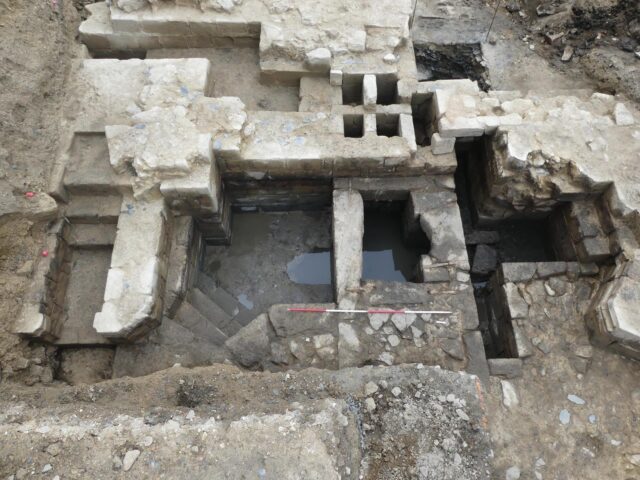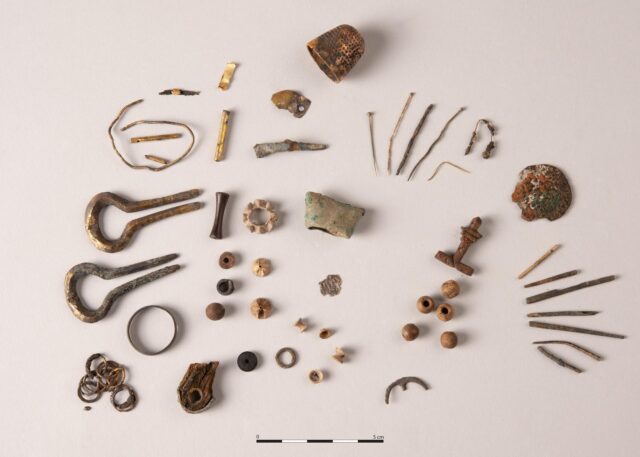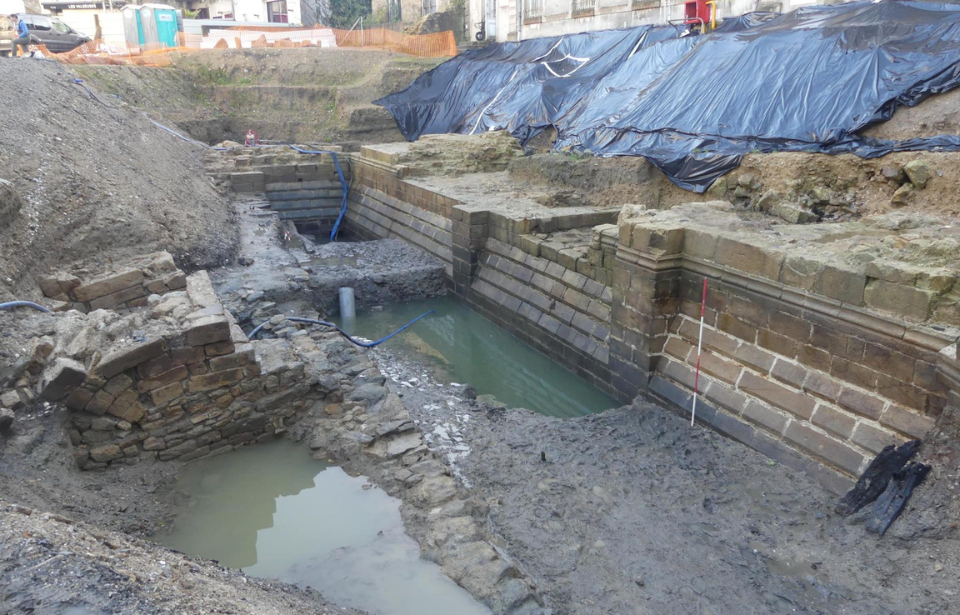During an excavation in France, archaeologists have discovered what was thought to be lost to time: the medieval castle of the Duke of Brittany. They were aware that they would find artifacts in the area, but weren’t prepared for exactly what they would uncover. As excavations continue, it is likely the castle will reveal more of its secrets.
How they managed to find the castle

A team of archaeologists was taking part in preventive archaeology slotted to take place before the construction of the future Museum of Fine Arts of the City of Vannes when they discovered something incredible. Digging into the courtyard of the Lagorce Hotel, a private mansion built in the late 18th century, they knew that it was built on the ruins of a medieval castle. However, they did not expect to discover the missing Chateau de l’Hermine, built by the Duke of Brittany Jean IV.
In 1381, the Duke had multiple fortresses built in the area “in order to assert his power,” but after several years, in the 1470s, the Chateau de l’Hermine was abandoned. By the 17th and 18th centuries, the castle has been all but forgotten. INRAP explained how “almost absent from the archives, the building only appears as ruins on plans from the 17th century.”
They discovered many elements of the castle

During their excavations, researchers discovered two stories of the fortress-like castle in remarkable condition. They believe that the construction of the castle was a well-organized affair, as they identified markings on some of the stones they determined to be workers’ way of following a building plan.
The walls they unearthed were substantial, with the whole site measuring in at 137 feet by 56 feet. Some of these walls stood 18 feet thick, and among those walls, archaeologists uncovered several staircases, one of which was a remarkably well-preserved ceremonial staircase. The castle was bordered by a moat, where they also found a latrine system and drainage pipes.
To the east, researchers identified a “square tower,” and within it, they discovered a water mill in the residential area. While the mill itself was missing, what they did find was the spot where the wheel would fit into the masonry. They also found the remains of a wooden bridge that connected to the entrance of the castle, which would have connected residents of the fortress to the rest of the city.
Several objects were found as well

Finding the fortress castle was a major discovery in itself, but archaeologists discovered a whole slew of artifacts during excavation. While manually searching the latrines and drainage pipes, they found a plethora of items that shed light on everyday life at the castle between the 15th and 16th centuries. These included coins, pots and pans, jewelry, wooden bowls, and fragments of barrels.
More from us: Vasa: The 1600s Swedish Warship That Survived Centuries Beneath the Water
The moat also proved to be a fruitful harborer of artifacts, with various clothing and shoe buckles, metal dishes, and padlocks for furniture boxes found within it.
